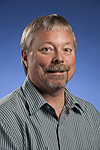How ALARA minimizes radiological exposure
John Anderson Jr., AD ES&H Department Head and Senior Safety Officer, wrote this column.
 |
|
John Anderson Jr.
|
The work taking place during the 2012 shutdown marks the next phase of Fermilab's migration to research at the Intensity Frontier. In the Accelerator Division, we are working on upgrades to the Linac, Booster, Recycler, Main Injector and the NuMI areas in support of the laboratory's experimental program.
Although we're three months into the shutdown, the planning for our shutdown activities began years ago. This includes creating an ALARA plan to minimize the radiological exposure workers are anticipated to receive in the accelerator tunnels while completing the upgrade activities.
So what is ALARA?
ALARA is the acronym for As Low As Reasonably Achievable. At Fermilab, this means making every reasonable effort to keep radiological exposures to personnel as far below established dose limits as practical, taking technological and economic aspects into consideration. The Fermilab Radiological Control Manual specifies a dose limit of 1,500 millirem per year, lower than the federal standard of 5,000 millirem per year we are required to meet. For comparison, according to the Health Physics Society, the dose from a typical chest CT (computed tomography) scan is 700 millirem.
ALARA planning includes examining the work activities performed in radiological areas and estimating the dose to workers. The AD Radiation Safety Group creates an ALARA plan by breaking down each shutdown task into its most basic steps. For each step, our group works with the project engineer or manager to estimate the number of people needed and the time required to complete the step. Oftentimes, these teams devise more efficient ways of performing the work to reduce the amount of time people will have to spend in the accelerator tunnels. Next, the Radiation Safety Group estimates the radiation dose rates where the work is to be performed. The estimated dose a worker assigned to a particular step will receive is the product of the estimated dose rate where the work is to be performed and the estimated time it takes to perform the work. The Radiation Safety Group then adds up and evaluates the estimated dose for each step to provide an estimate of the total radiological exposure to workers from the task.
Once this phase of the ALARA plan is complete, we optimize the work schedule and the activities in the tunnels while keeping doses to workers as low as reasonably achievable. Typical ways to reduce exposure include delaying work activities until dose rates in the accelerator tunnels have decreased, changing the way work is performed, limiting the amount of time a worker can spend on a task and using temporary shielding to reduce dose rates.
We require all workers who enter the accelerator tunnels to wear both a pocket dosimeter and a dosimetry badge. The pocket dosimeter allows us to estimate the radiological exposure in real time. The dosimetry badge allows us to monitor the actual radiation exposure of each worker.
The ALARA philosophy balances the laboratory's programmatic needs with the radiological safety of its workers. ALARA plans help ensure that the laboratory's work is being performed in both dose- and cost-effective manners.
Implementing ALARA planning for shutdown activities is one of the many ways the laboratory keeps its workers safe. If you have questions about radiation safety, please contact your D/S/C Radiation Safety Officer.
|